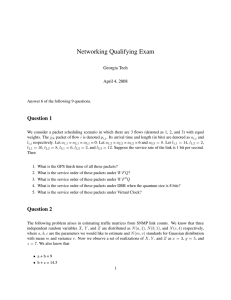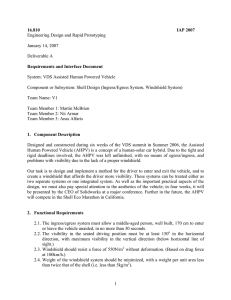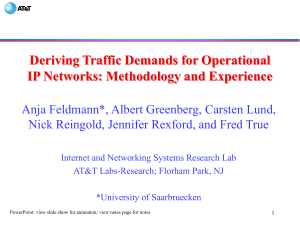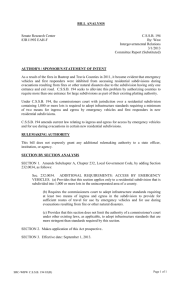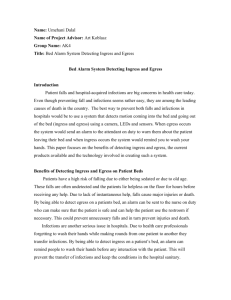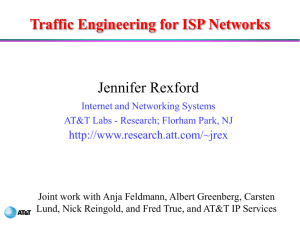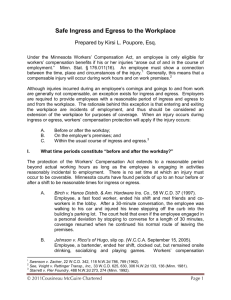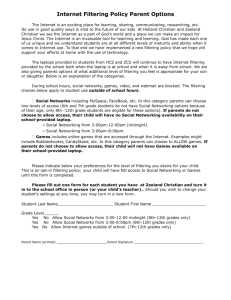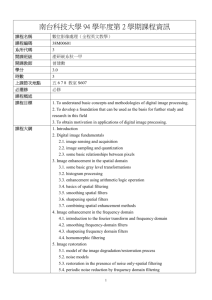IS3220: Unit 5 Ingress and Egress Filtering Ingress Filtering Ingress
advertisement
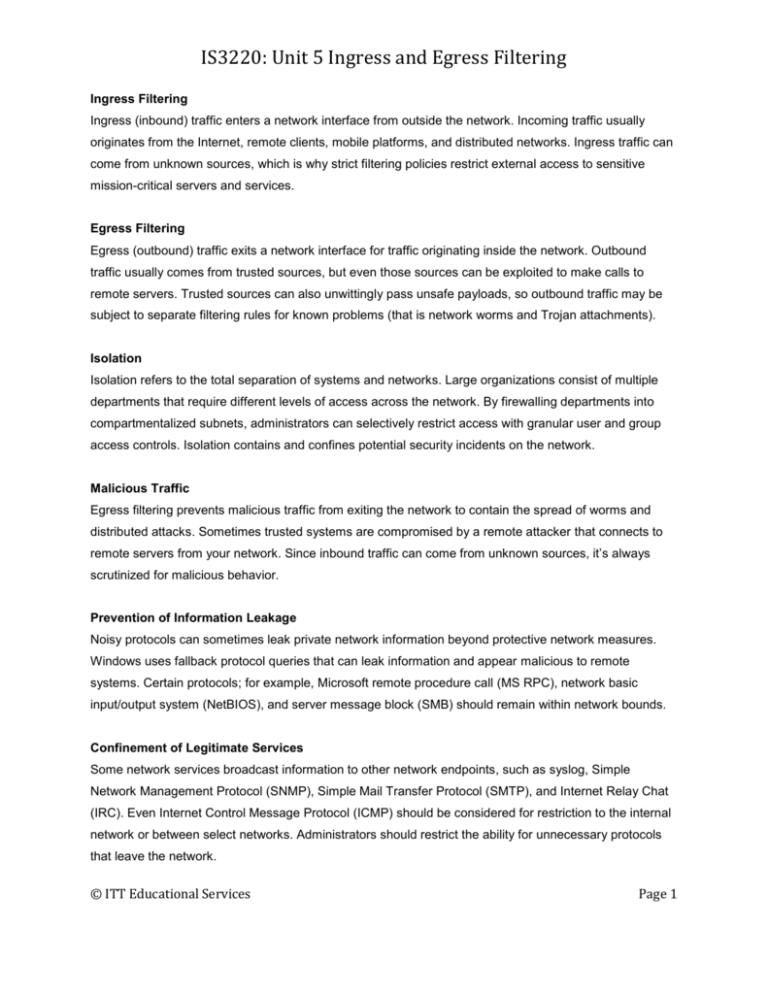
IS3220: Unit 5 Ingress and Egress Filtering Ingress Filtering Ingress (inbound) traffic enters a network interface from outside the network. Incoming traffic usually originates from the Internet, remote clients, mobile platforms, and distributed networks. Ingress traffic can come from unknown sources, which is why strict filtering policies restrict external access to sensitive mission-critical servers and services. Egress Filtering Egress (outbound) traffic exits a network interface for traffic originating inside the network. Outbound traffic usually comes from trusted sources, but even those sources can be exploited to make calls to remote servers. Trusted sources can also unwittingly pass unsafe payloads, so outbound traffic may be subject to separate filtering rules for known problems (that is network worms and Trojan attachments). Isolation Isolation refers to the total separation of systems and networks. Large organizations consist of multiple departments that require different levels of access across the network. By firewalling departments into compartmentalized subnets, administrators can selectively restrict access with granular user and group access controls. Isolation contains and confines potential security incidents on the network. Malicious Traffic Egress filtering prevents malicious traffic from exiting the network to contain the spread of worms and distributed attacks. Sometimes trusted systems are compromised by a remote attacker that connects to remote servers from your network. Since inbound traffic can come from unknown sources, it’s always scrutinized for malicious behavior. Prevention of Information Leakage Noisy protocols can sometimes leak private network information beyond protective network measures. Windows uses fallback protocol queries that can leak information and appear malicious to remote systems. Certain protocols; for example, Microsoft remote procedure call (MS RPC), network basic input/output system (NetBIOS), and server message block (SMB) should remain within network bounds. Confinement of Legitimate Services Some network services broadcast information to other network endpoints, such as syslog, Simple Network Management Protocol (SNMP), Simple Mail Transfer Protocol (SMTP), and Internet Relay Chat (IRC). Even Internet Control Message Protocol (ICMP) should be considered for restriction to the internal network or between select networks. Administrators should restrict the ability for unnecessary protocols that leave the network. © ITT Educational Services Page 1 IS3220: Unit 5 Ingress and Egress Filtering Domain Compartmentalization Separating ingress and egress traffic helps establish compartmentalized network domains. What comes in is treated differently than what goes out. Sensitive systems and services should be shielded from unauthorized use by external parties, and trusted internal users should not pass malicious traffic. © ITT Educational Services Page 2
